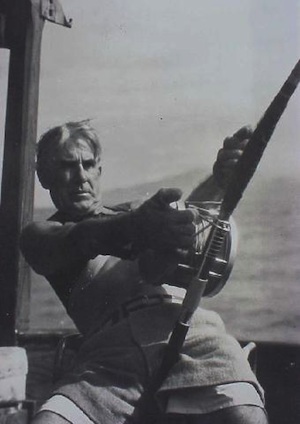Zane Grey: Western Author Made Keys Fishing History
For more than a century, familiar and notable authors passionate about Florida Keys angling opportunities have made lasting contributions to the sport and the Keys fishery — including a young native of Zanesville, Ohio.
Western novelist Zane Grey arrived in the early 1900s and stayed at the Long Key Fishing Camp, a luxurious resort built by Henry Flagler.
During his stays, Grey arose early, wrote in the cool morning and then headed out to sea to fish offshore for eight to 10 hours with local guide Bill Partea. Long Key, Duck Key and Grassy Key were nearshore favorites to target.
From 1911 through 1926, Grey missed only two fishing seasons in the Keys.
Anglers of Grey's era brought their entire catch to shore, taking photographs with the fish to record the day. Although Grey is known to have posed with single-day catches that included sailfish and marlin, he was one of the first anglers to embrace a catch-and-release ethic.
Grey co-founded and served as president of the legendary Long Key Fishing Club that bore a sign that read in part: "GOOD SPORTSMANSHIP Does Not Consist in A BIG CATCH. But in The Use Of Light Tackle and a REASONABLE CATCH."
The sign also recommended bag limits: "2 SAIL FISH, 5 TARPON, 6 KING FISH, 6 GROUPER" and added, "Any Fish Caught Above The Number Of Each Above Specified Should Be Carefully Returned To The Water."
Grey also introduced a worldwide audience to "Gulf Stream Fishing" in his 1919 pamphlet, "Tales of Fishes," in which he described the use of light tackle to catch sailfish and kingfish off the Keys. It was the first time sailfish were presented as a worthy game-fish target.
In addition, Grey also wrote of his obsession with flats fishing, hunting the elusive bonefish:
"If I spent another month bonefishing, I would become obsessed and lose my enthusiasm for other kinds of fish. Why? My reasons range from the exceedingly graceful beauty of the bonefish to the fact that he is the wisest, shyest, wariest, strangest fish I have ever studied . . . As for the speed of the bonefish, I claim no salmon, no barracuda, no other fish celebrated for swiftness of motion, is in his class. As for the strength of the bonefish, I actually hesitate to give my impressions. As for his cunning, it is utterly baffling. As for his biting, it is almost imperceptible. As for his tactics, they are beyond conjecture."
Today, anglers continue fishing for bonefish and scores of other species in Keys waters. The places Grey loved so much are protected by the Florida Keys National Marine Sanctuary, Everglades National Park and several national refuges.
The author would likely be pleased to know that fishing is still permitted in most of these areas, thanks to a widely practiced catch-and-release approach that balances preservation with recreation.

During his time in the Keys, novelist and outdoorsman Zane Grey Grey arose early, wrote in the cool morning and then headed out to sea to fish. Photo: AntiqueFishingReels.com

Grey's 1919 pamphlet, "Tales of Fishes," described the use of light tackle to catch sailfish and kingfish off the Keys.

